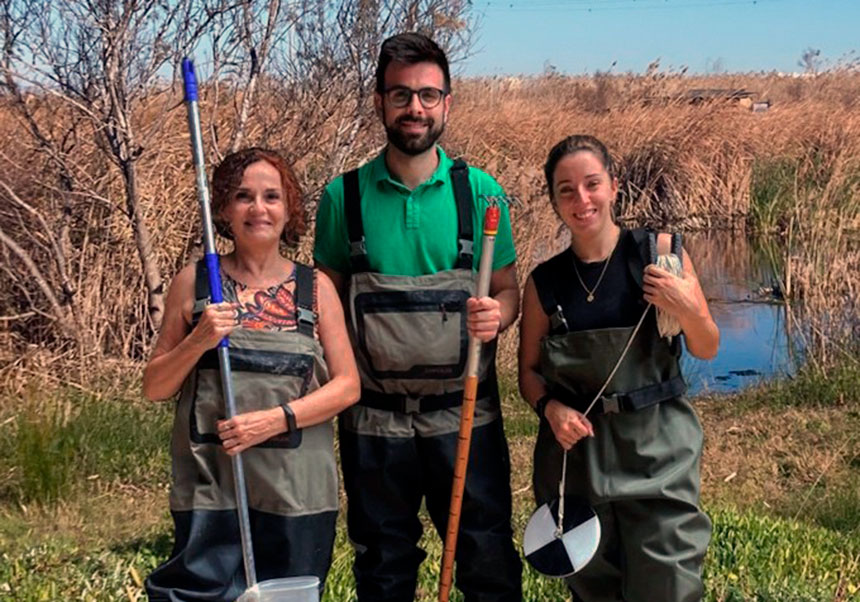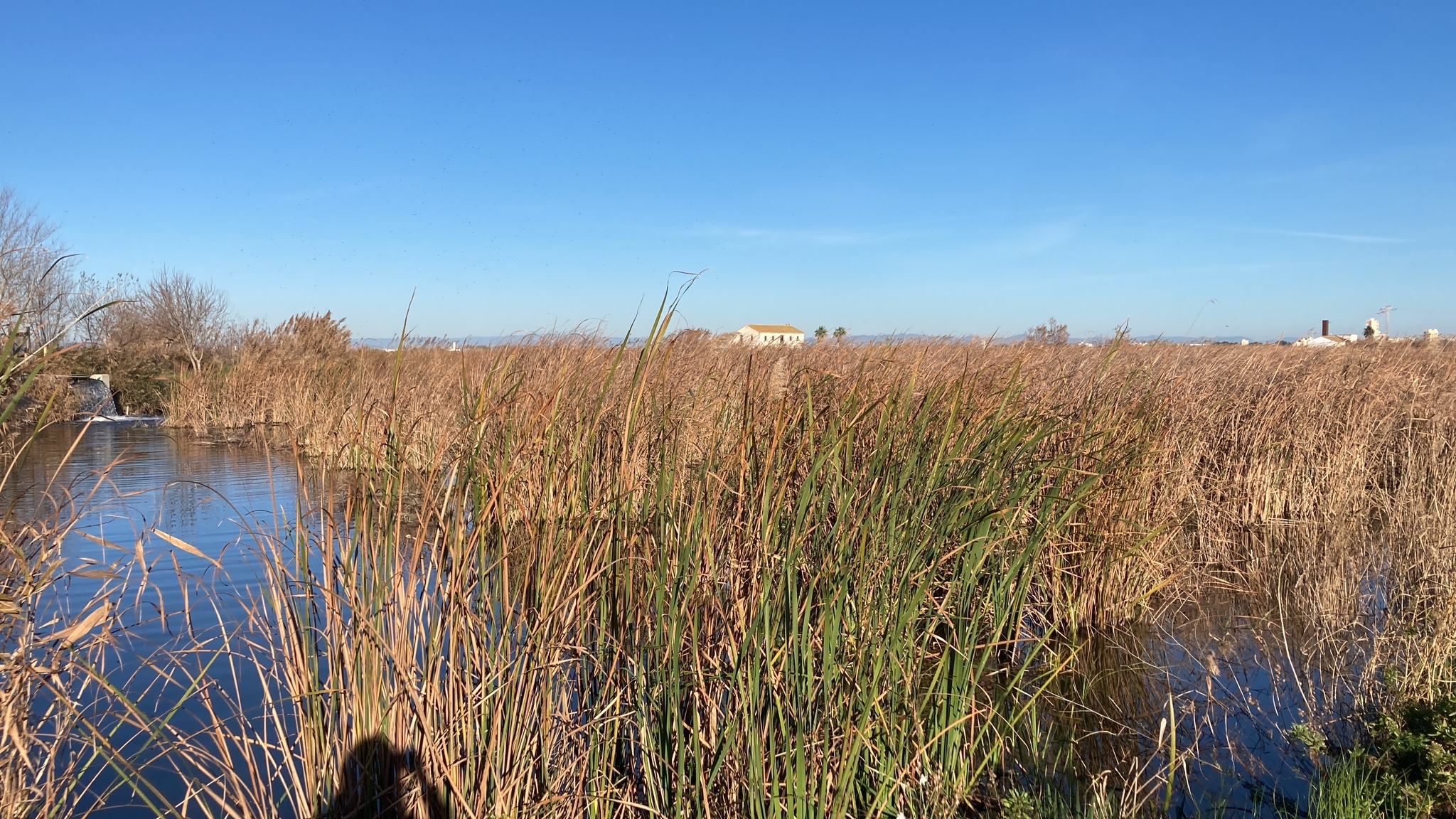
A study by the Cavanilles Institute of Biodiversity and Evolutionary Biology and the Department of Analytical Chemistry of the University of Valencia reveals that constructed wetlands significantly mitigate the presence of water pollutants, mainly of agricultural origin, but also from urban and industrial sources. The research, carried out between 2020 and 2025, concludes that the Tancat de la Pipa and the Tancat de l’Illa artificial wetlands, located within the Albufera Natural Park, reduced the concentrations of the pesticides, heavy metals and metalloids analysed in outlet waters by between 50% and 100%, with overall concentration reductions ranging from 15% to 50%.
The study analysed water samples from inlets, middle sites and outlets – which discharge directly or indirectly into the Albufera lake – of both the Tancat de la Pipa and the Tancat de l’Illa, as well as samples of sediments, macrophytes and herbivorous bird excrement. The results show that the constructed wetlands reduced the concentration in outlet waters by between 57% and 100% for fungicides, between 67% and 86% for herbicides and between 67% and 100% for insecticides. In addition, total removal efficiencies were 15%, 25% and 50%, respectively. In the case of metals, the concentration of 50% of the elements was lower at the outlets, with seasonal variations observed.
The study also examined the state of the water following the cold drop of October 2024, which caused “significantly higher concentrations of certain pesticides (specifically carbendazim, metalaxyl, piperonyl butoxide, diuron, diazinon and chlorpyrifos)”, but which were reduced in the outlet waters thanks to the action of these wetlands.
In addition to the configuration of the artificial wetlands, the specific physical and chemical properties of these compounds influenced pesticide retention. Non-mobile compounds (the least soluble, which tend to settle) accumulated in sediments, whereas mobile ones (dissolved in water) were taken up by vegetation and eventually detected in the faeces of herbivorous birds.
The environmental risks associated with pesticide concentrations – including banned compounds still detected in the waters of the natural park – were notably reduced in the wetlands’ outlet waters, preventing the discharge of waters with moderate- and high-risk concentrations into the Albufera of Valencia lagoon. As for metals, although the overall risk levels were low, mercury exceeded the threshold values established by European legislation, yet its concentration was reduced in outlet waters.
“The results of this study reinforce the value of nature-based solutions for improving water quality and protecting biodiversity”, says Nuria Carabal, a member of the research team. “The high number of contaminants still detected, including several banned pesticides, together with mercury concentrations, reveal the persistent pressure that the natural park continues to face, and the important role played by constructed wetlands”, the researcher concludes.
Article reference: N. Carabal et al. "Constructed wetlands for the mitigation of pesticide and heavy metal concentrations in a protected agrolandscape: removal efficiencies and ecological risk assessment". Science of The Total Environment. Volume 1001, 25 October 2025, 180466. DOI: https://doi.org/10.1016/j.scitotenv.2025.180466
Annex photo caption: Artificial wetland of the Tancat de l’Illa.
Images:
.jpg)











